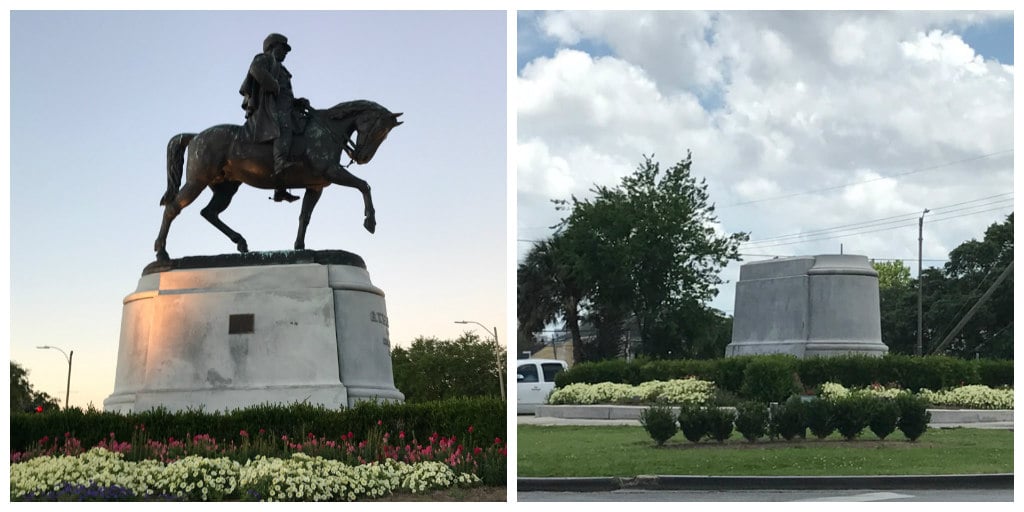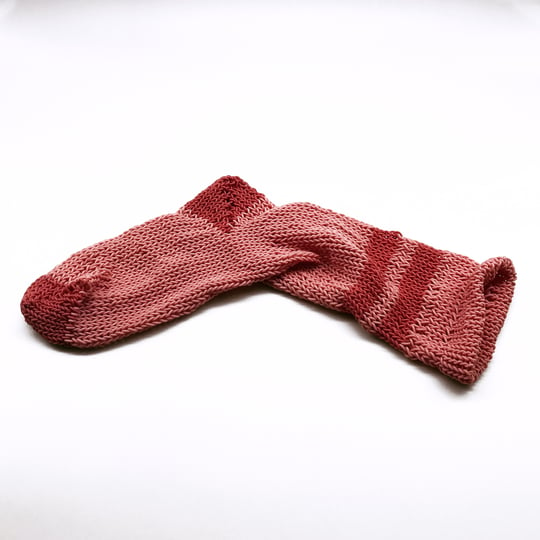
On Tuesday, May 16, 2017, Beauregard came down. That’s General P. G. T. Beauregard, the Civil War general enshrined in an equestrian monument that stood outside City Park in New Orleans. Born in Louisiana, Beauregard is known for his role in Confederate victories at Fort Sumter and Manassas (Bull Run) during the Civil War, and for approving the Confederate Flag design still seen today. These days, most people in New Orleans know him as a traffic landmark, ensconced in the middle of a traffic circle at the main entrance to City Park, near the New Orleans Museum of Art. In fact, on the day of his removal, the local newspaper felt the need to educate the public about who he actually was.
Beauregard has come to greater public attention since the City Council voted in 2015 to remove his monument and three other Civil War-related monuments. The first one, the Battle of Liberty Place monument, came down on April 24, and the second one, a statue of Jefferson Davis, was removed on May 11. I started to hear rumors of the third removal at dinner on Tuesday, with alerts arriving on my phone around 8pm, reporting that the police were closing off streets around Gen. Beauregard. I arrived a little after 9pm to find the cranes in place and workers drilling to separate the statue from the base. At the site, several pro-Confederate monument supporters were waving Confederate flags on the left side of a police barricade, while the anti-monument wing and others gathered on the right.

Onlookers were separated from the traffic circle by Bayou St. John, and I found a peaceful spot on its banks to observe. It was a beautiful night— the usual summer humidity had not set in yet, and a light breeze was creating ripples on the water. Several residents from the large apartment building next to the bayou had come down to watch the proceedings, saying hello and greeting neighbors. If there’s anything that New Orleanians know how to do, it’s how to watch long, slow-moving events like Mardi Gras parades. So people brought their festival chairs, adult beverages, kids, dogs, and toys, and one guy even passed around a hot bag of microwave popcorn. One man was fishing in the bayou, while a mother posed her daughter for the classic “it looks like you’re holding up the monument!” photo. I hung out for an hour or two before heading home, where I watched the proceedings live online until I fell asleep waiting for the moment of lift off (it would not take place until 3am).
Due to safety concerns (contractors have been subject to death threats), the workers wore full face masks during the removal. Despite worries, the atmosphere was calm, though newspaper reports mention a few arrests. I was struck by the shape of the masks, which were similar to the ones worn by Mardi Gras krewe members when they ride in parades and throw out beads. The workers’ masks were certainly missing the sequins and other decorations requisite on Mardi Gras krewe masks, but they function in a similar way to hide the identity of the wearer and to imply the potential reversal of power that is at the heart of Mardi Gras. Anyone can become king for the day, or vice versa. New Orleans was proving that by dethroning Beauregard. But this time it spoke to a change of values that would last more than a day—towards equality for all and an end to racism.

At this point, the debate about whether or not the monuments should be removed is a moot point. Even debates over the ownership of the land that Beauregard sits on have not stopped the removal, and the mayor has been vocal about defending the immediate removal. The pro-monument side is angry about losing the fight, while the anti-monument side is not happy about the dark-of-night staging. Take ’Em Down NOLA, a local organization that has led protests against the monuments, has objected to the secrecy of the removals, preferring a public observation in the light of day. In fact, the last removal did happen in daylight, when Robert E. Lee was removed from his perch high above Lee Circle on May 19.
In order to do just that, Take ’Em Down NOLA organized a second line to celebrate the removals. Held on Sunday, May 7, the gathering started in Congo Square in Armstrong Park. The rally organizers explained that everyone was standing in a park that modeled the kind of transformation they hoped for—formerly Place de Negres, the park was renamed Beauregard Square (just like the monument at City Park), and then renamed again after Louis Armstrong, the famous jazz trumpeter. The choice recognizes the history of the site as the birthplace of jazz, thought to have started in the Sunday slave gatherings held in the area of the park known as Congo Square (on the history of the site, see here).
 New Creations Brass Band provided the music that qualified the event as a second line, and the “first line” featured veterans of the Civil Rights movement, carrying banners that read “Bury White Supremacy” and “Power to the People.” Other participants (the “second line”) carried posters designed for Take ’Em Down NOLA and handmade signs displaying individual responses to the situation—often very amusing and spot on. One guy was wearing a brown bear costume and carrying a sign that said “I can’t bear Trump.” On a hot, sunny day, that costume choice required a lot of commitment.
New Creations Brass Band provided the music that qualified the event as a second line, and the “first line” featured veterans of the Civil Rights movement, carrying banners that read “Bury White Supremacy” and “Power to the People.” Other participants (the “second line”) carried posters designed for Take ’Em Down NOLA and handmade signs displaying individual responses to the situation—often very amusing and spot on. One guy was wearing a brown bear costume and carrying a sign that said “I can’t bear Trump.” On a hot, sunny day, that costume choice required a lot of commitment.
To celebrate the removals, Take ’Em Down NOLA organized a second line. Held on Sunday, May 7, the gathering started in Congo Square in Armstrong Park. The crowd paraded through the French Quarter toward Jackson Square, stopping before the entrance to the park where another equestrian monument pays homage to Andrew Jackson. The crowd chanted, “We can’t get no satisfaction/Until we take down Andrew Jackson.” This one has not been on the mayor’s list—probably due to its iconic status and importance to tourism—but Take ’Em Down NOLA argues that it too should be removed. Continuing down Decatur Street, the marchers passed another monument that has been suggested for removal: a statue to Bienville that includes a Native American figure clearly depicted in a vanquished position. Bienville founded New Orleans in 1718, a date that the city will be celebrating next year for its 300th birthday. Then the group headed up Canal Street and through the downtown business district toward Lee Circle, where Robert E. Lee stands on top of a 60 foot high column. Lee would be the last statue to be removed, and the most challenging given its height.
The removal of Beauregard occurred a little over a week after the second line, and almost exactly 63 years after segregation was declared illegal; the following day was the anniversary of the Brown v. Board of Education decision. The timing is ironic given that many argue that Beauregard should be respected for his efforts to integrate after the Civil War, and to award voting rights to African-Americans. But that information pales in the face of public perception of the monument as dedicated to the Confederacy, to the Lost Cause, to white supremacy and racism. And more and more, journalists writing about New Orleans are educating the public about the Lost Cause as an ideology that took root in the Reconstruction period and the early 20th century, not during the Civil War. The monuments don’t really honor the soldiers who died in the war, but instead serve as public manifestations of campaigns to institutionalize racism and segregation. One such instance was the Plessy v. Ferguson Supreme Court decision, based on a New Orleans case, that legalized segregation in 1896—and that was overturned by Brown v. Board of Education. After decades of activist work, Black Lives Matter, protests against police brutality, and recent documentary projects such as 13th and I Am Not Your Negro, consciousness of the wound of institutionalized racism and segregation is growing.
This year, Memorial Day will be very different.
Rebecca Lee Reynolds is an assistant professor in the department of fine arts at the University of New Orleans, where she teaches art history.




